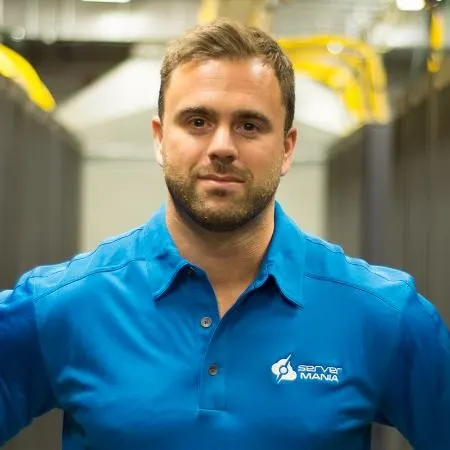What Is The Future Of Cloud Computing?

We’re rapidly approaching the tenth anniversary of the cloud. In the last decade, the cloud has fundamentally reshaped the infrastructure hosting and enterprise IT space, and in the process has matured enormously. The cloud has evolved from a rudimentary alternative to on-prem data centers to the highly capable and flexible platform we take for granted today.
It will continue to evolve in the future, in ways that are both predictable and beyond our ability to forecast. The future of cloud will be managed, hybrid, make heavy use of containers, and be distributed beyond the traditional data center.
The Future of Cloud Computing Is Managed

In the early days of the cloud, management services were rudimentary. Infrastructure-as-a-Service providers gave clients the bare bones infrastructure they needed to host applications and services, but everything else was left up to the client. Of course, the physical infrastructure layer and the network were managed by the cloud vendor, but that leaves a lot in the hands of the client.
Any number of companies dipping a toe into the cloud were burned by the non-managed nature of cloud platforms, and that continues to this day. Cloud vendors weren’t coy about the services they offered: they were clear from the start that everything above the virtualization layer was up to the client, including essentials like redundancy and reliability.
Operations people with knowledge of how cloud platforms worked were well aware that everything needed to be made redundant. If a business depended entirely on a particular cloud server for a service, it was their responsibility to make sure a redundant server was waiting in the wings to take over.
If something did go wrong, which on a long enough time-line it always does, the cloud vendor would disavow any responsibility for data loss — and any help setting things right wasn’t forthcoming from the vendor.
For some companies, that arrangement was ideal, but many were stung by the lack of high-availability, reliability, and redundancy. Leading cloud platforms of today and in the future will offer a wide range of management services to lift some of the burden from clients. Built-in redundancy, high-availability, and performance optimization will differentiate leading cloud platforms from more basic “infrastructure as a commodity” providers.
In the Infrastructure-as-a-Service space, that won’t manifest itself as locked-down platforms into which clients have no insight and over which they have no control. Infrastructure-as-a-Service won’t turn into Platform-as-a-Service, but the most forward-thinking cloud vendors will take on the heavy lifting, freeing clients to focus on building their applications and services.
The Future Is Hybrid
There is no one-size fits all infrastructure solution. There can’t be, because for every benefit a particular platform has, there are payoffs. Cloud platforms are fantastic for elasticity and rapid scaling, but if performance is more important than elasticity, bare metal is almost certainly a better option.
Historically, the cloud marketing hype has focused around the benefits of a particular platform: cloud is best, bare metal is best, public is best, private is best. In truth, there is no “best for everything” platform. There are however, platforms that are best for specific scenarios, tasks, budgets, time-frames, and points in a product’s life-cycle.
Companies have a range of different needs: they need elasticity for some aspects of their operations and they need the best possible performance for others. They need on-demand servers from the public cloud, and they also need private cloud platforms for security and regulatory compliance.
The future cloud is a hybrid cloud in which clients can choose from the best of cloud modalities and bare metal solutions to build a hybrid hosting environment that exactly conforms to their needs.
The Future Is IaaS And Containers
Platform-as-a-Service is used because it allows developers to focus on their code without having to worry about the infrastructure and the operating system environment. It’s great for the early stages of a project when all the company cares about is getting a functional MVP up and running.
But Platform-as-a-Service quickly becomes limiting as projects run up against strict library versioning and a requirement that applications are shaped to the demands of the platform rather than the platform being designed to meet the needs of the project.
Container solutions like Docker have none of these problems, and as the tooling and deployment story around containers has matured, Infrastructure-as-a-Service and containers have become a viable replacement for Platform-as-a-Service in most cases.
The Future Is On The Edge

When we think of the cloud we usually call to mind servers in racks in a data center. That infrastructure model isn’t going anywhere, but it’s likely that the future cloud will be more diverse and dispersed. The Internet of Things is growing rapidly, and for the most sophisticated IoT applications — think driverless goods delivery and automated factories — that demand real time feedback, it makes sense to push the processing of data and communications to the edge of the cloud.
Known as edge computing or fog computing among other marketing buzzwords, the outward movement of cloud processing will enable a more reactive and collaborative data environment and help fulfil the potential of the Internet of Things.
There are, of course, advantages to aggregating data and processing it a central location, so the future cloud is likely to be hierarchical, with smart devices on the edge performing real time analysis before feeding data into processing units housed in nearby mini-data-centers and ultimately to the large-scale data centers that have the power necessary to perform heavy-duty number crunching and large-scale data analysis and storage.
Cloud computing entered its dominant phase less than a decade ago. Although cloud computing will evolve as we move into the future, technology on the cusp of mainstream adoption — from driverless cars to ubiquitous robotics to augmented and virtual reality — will depend on the cloud.
Was this page helpful?

